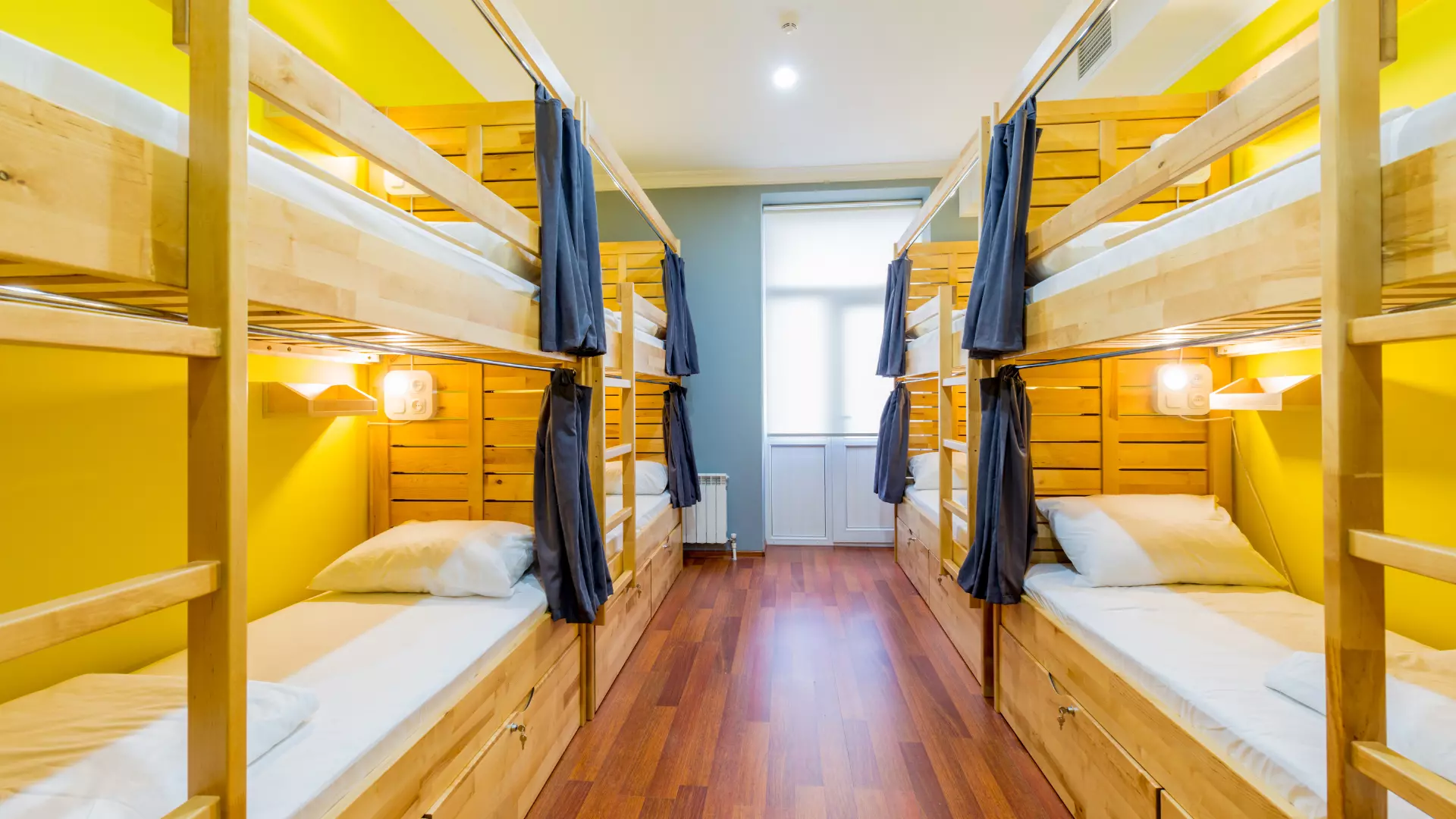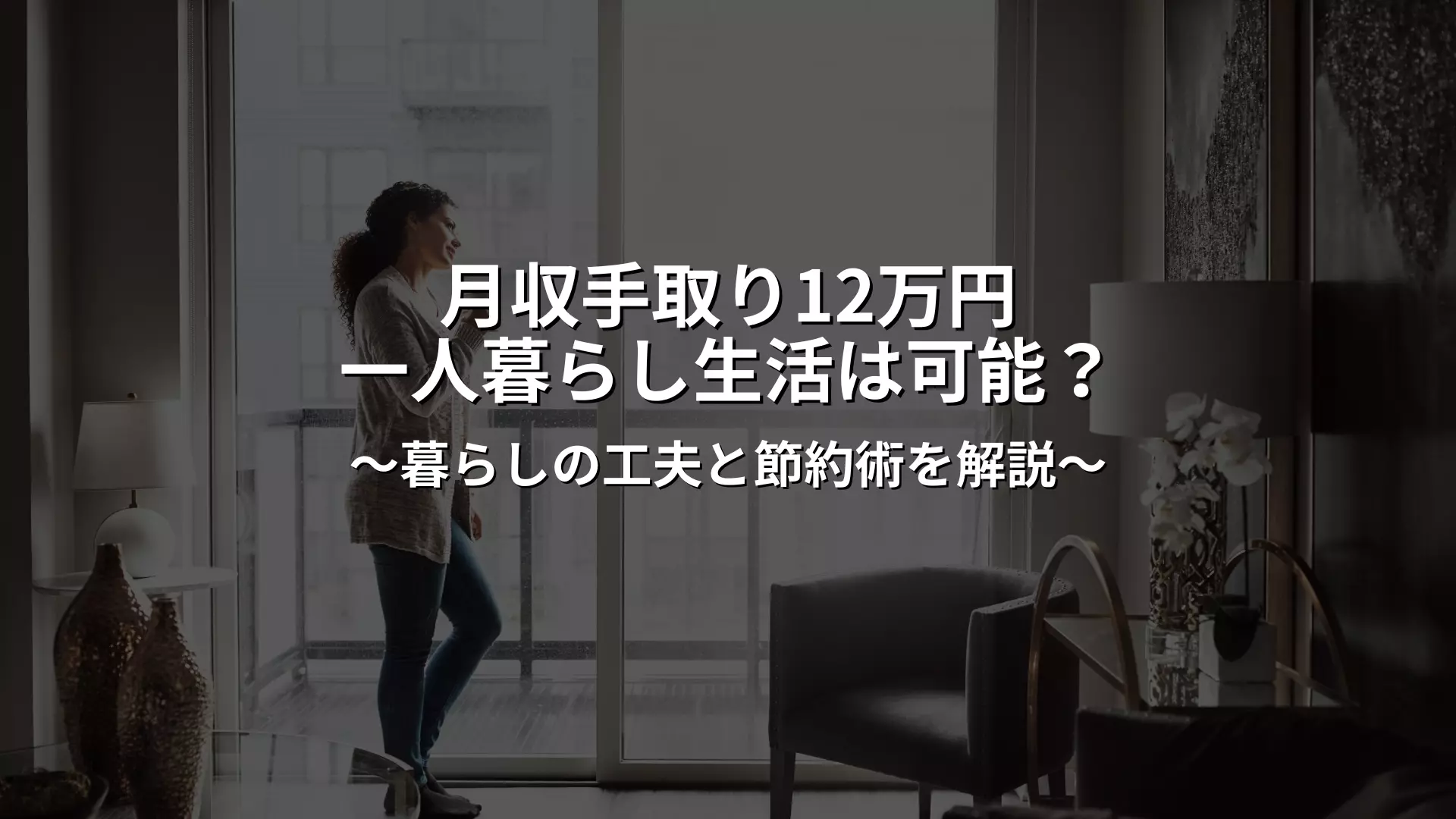What is a share house?
A share house is a type of housing where multiple residents share a single home. Generally, each person's bedroom is kept as a private space, and residents use shared spaces such as the living room, kitchen, and bathroom. In recent years, share houses have become increasingly popular, especially in urban areas, as a way to save money and form communities.
Differences from room sharing and guesthouses
Share houses are often confused with "room shares" and "guest houses." The differences between them can be summarized as follows:
Room Share
- To enter into a rental agreement with a friend or acquaintance and share a room or residence.
- Rent and utility bills are split equally, but each individual is responsible for signing contracts and managing the property.
- The rules for the shared spaces must be decided by the residents themselves.
guest house
- Generally a short-term accommodation.
- Beds are often rented out on a per-bedroom basis, with dormitories (shared rooms) being the norm.
- It is run more like a hotel and there is a high turnover of residents.
Share House
- It is managed by a management company and contracts are made on an individual basis.
- The shared spaces and facilities are well equipped and the property is designed for long-term residence.
- It is easy for residents to form communities.
What kind of people live here? (Introduction by lifestyle)
Share houses are home to people with a variety of lifestyles. The type of share house you should choose will depend on your purpose and lifestyle.
Interactive (community-oriented)
Among shared houses, this type places emphasis on interaction between residents.
- Resident events and parties are held regularly.
- The shared spaces are spacious, and interactions naturally occur in the living room and kitchen.
- There are many residents from overseas, and intercultural exchange is thriving.
Cost-effective type
This is a shared house for people who want to keep rent and living expenses down.
- The private rooms are small and the facilities are minimal, but the rent is cheap.
- The shared facilities are simple, keeping management costs down.
- In most cases, utilities and Wi-Fi are included.
Purpose-based (with working space, etc.)
This is a shared house for residents with specific purposes.
- With working space: Equipped with a work space for teleworking and freelancers.
- For creators: There is a music studio and an atelier, making it easy to engage in creative activities.
- For entrepreneurs: A shared house that serves as a place for business exchange.
Women only/Men only
This is a share house for people who place importance on security.
- Women-only share house: Security is strengthened and only women are allowed to live there.
- Men-only share houses: Only men are allowed to live in these types of houses, and they do not emphasize social interaction.
The advantages and disadvantages of women-only share houses are explained in detail in this article.
"What are the advantages and disadvantages of a women-only share house?"
Senior Friendly/Pet Friendly Properties
This is a special share house suited to your life stage.
- For seniors: Share houses are a new lifestyle for people over 60 years old who want to live after retirement.
- Pet-friendly property: A shared house where you can live with pets such as dogs and cats.
The following article provides detailed information about the things you should be careful about when choosing a share house that allows pets, as well as the advantages and disadvantages.
"Can I keep pets in a share house? Here are the pros and cons"
There are many different types of share houses, so it is important to choose one that suits your lifestyle.
Benefits of a share house
A share house is a style of residence that combines the freedom of living alone with the convenience of living together with multiple people. It has great benefits, especially for those who want to live a comfortable life while keeping down the rising rents in urban areas. Here, we will explain the appeal of a share house in detail.
Reduce rent and initial costs
The biggest advantage of a share house is that you can significantly reduce your housing costs. With a regular rental property, you have to pay initial costs such as a security deposit, key money, and agent fees, but with a share house, these are often unnecessary or very low, making it easier to move.
In addition, the monthly rent tends to be cheaper than properties for single people in the same area. Especially in the city center, the rent for a one-room apartment tends to be expensive, but a shared house offers larger space and better facilities for the same budget.
point
- No or low deposit, key money, or brokerage fees
- Rent is cheaper than living alone
- Easy to live in even in high-rent areas
Easy to move in with furniture and appliances included
Share houses often already come equipped with the furniture and appliances necessary for daily life, which can greatly reduce the burden of moving.
In a typical share house, household appliances such as a refrigerator, washing machine, microwave, and rice cooker are installed in the common areas, and private rooms often come equipped with a bed and desk. This means that you can move in right away without having to make any major purchases when starting your new life.
In addition, since the amount of sorting and disposal of home appliances and furniture required when you move out is minimal, it is also suitable for people who move frequently.
point
- Furnishings and appliances necessary for daily life are provided
- Moving with minimal luggage possible
- No disposal costs or hassle when moving out
No need to sign up for utilities, so procedures are easy
In a normal rental property, you have to sign individual contracts for essential utilities such as electricity, gas, water, and the internet, but these procedures are not necessary in a share house. In many share houses, the essential utilities are already connected, so you can start living comfortably from the day you move in.
In particular, many properties come with internet access built in, which can reduce the hassle and cost of signing a new contract. There is also no need to cancel the contract when you move out, which is a big advantage for busy people.
point
- No need to sign contracts or open services for utilities
- In most cases, the internet environment is good
- No cancellation procedures required when moving out, making it smooth
Ample shared space (large living room and kitchen)
One of the attractions of a share house is the ample shared space. In a typical one-room apartment, you can only use the small kitchen and living room, but in a share house you can use a spacious common area.
The living room is often equipped with a sofa and a large TV, so you can relax and unwind. The kitchen is also equipped with multiple stoves and cooking utensils, so you can enjoy cooking your own meals.
point
- Larger shared space than typical rental properties
- Enjoy cooking in the fully equipped kitchen
- Relax in the living room with sofa and TV.
Increased interaction with people (networking)
Living in a share house naturally creates opportunities to interact with other residents. There are many opportunities to meet people from different industries and foreigners, which can be a great way to build new connections.
In particular, if you move to a new place for the first time, you may feel lonely if you don't know anyone, but in a share house, you can feel at ease because conversations tend to happen on a daily basis. In addition, share house residents sometimes organize events together, which allows you to expand your circle of friends.
What's more, it can also lead to business networking opportunities, which often lead to new job opportunities.
point
- Natural interaction between residents
- You are less likely to feel lonely even in a new place
- Meet people from different industries and cultures
- It may lead to business opportunities
Short-term contracts are sometimes available, giving you flexibility in where you live
While typical rental properties tend to have long contract periods, such as two years, share houses may allow for shorter contract periods. This allows them to meet the needs of those who want to live in a share house for a short period before being transferred, or who want to try living in a share house for a while.
Also, because the contract period is short, you have the flexibility to move quickly if the living environment doesn't suit you.
point
- Many properties available for short-term leases
- Easy to move if the living environment doesn't suit you
- Ideal for temporary housing due to work transfers or studying abroad
Search for a room
Only furnished properties with appliances are listed!
Disadvantages of a share house
Shared houses have many advantages, such as low rent and interaction between residents, but they also have disadvantages that come with communal living. To live comfortably, it is necessary to understand the disadvantages in advance and find ways to avoid trouble. Here we will explain in detail the main disadvantages of shared houses.
Privacy is difficult to ensure
Although shared houses provide private rooms, you still share common spaces such as the living room, kitchen, and bathroom with other residents, so it can be more difficult to maintain privacy than living alone.
In particular, in properties with thin walls, noise from neighboring rooms can be a concern, and if you have to go through the living room to get to your room, you will always have to face the other residents. Also, properties without locks on private rooms can make you feel uneasy about security.
point
- Living space is shared, making it difficult to secure complete privacy
- If the walls are thin, noise from the next room can be a concern
- There are concerns about security in properties where private rooms do not have locks
Your life rhythm may not match up
Share houses are home to people with a variety of lifestyles, including students, working adults, freelancers, etc. Because of this, your lifestyle rhythm may not match the rhythm of the other residents, which can cause stress.
For example, if you work early in the morning and live with noisy neighbors, it may be difficult to get enough sleep. Also, for people who live a nocturnal lifestyle, the noise of neighbors who are active early in the morning may be a nuisance.
point
- Each resident has their own lifestyle, which can cause stress
- There is a possibility that noises from daily life in the early morning and late night may be bothersome
- It can be hard to concentrate on work or study.
Life sounds and noise problems are likely to occur
When living together, it is impossible to avoid issues with noise and other household noises. In particular, shared houses often have thinner walls than regular rental properties, meaning that sounds from neighboring rooms and common areas can easily echo through.
For example, if someone is on the phone or playing games late into the night, or if someone is playing music at a loud volume, it can be difficult to stay comfortable. Also, conversations in common areas that continue until late at night can be a big stress for sleeping residents.
point
- If the walls are thin, noise from daily life can be a problem
- Nighttime conversations and music can cause problems
- You may need earphones or soundproofing products
It's hard to invite friends and family over
In a share house, there are multiple other residents besides yourself, so it is often difficult to invite friends or family over. In particular, some properties have strict rules about visitors in order to respect the privacy of other residents.
In addition, there are restrictions on holding large meals or parties in shared spaces, so the fact that you cannot invite others over as freely is a major difference from living alone.
point
- In consideration of residents' privacy, there are often restrictions on visitors.
- You must ask permission before inviting friends or family
- Large gatherings and parties may be restricted.
Risk of trouble between tenants
In a share house, people with different values and lifestyles live together, which can lead to trouble between residents. In particular, there are often disagreements over how to use the shared spaces, noises, cleaning rules, and more.
Also, if the residents' personalities or ways of thinking do not match, relationships can become strained. A share house should be a place where you can relax after work or school, but if relationships between residents deteriorate, it can cause mental stress.
point
- Problems are likely to occur due to differences in lifestyle
- Conflicts can arise over rules for cleaning and taking out the trash.
- If you don't get along with the other residents, you're likely to get stressed.
Share house room types (differences in private space)
Share house room types are broadly divided into three types: "dormitory (shared room)," "semi-private (with partitions)," and "private room (private room with lock)." Understand the characteristics of each type and choose the one that suits your lifestyle.

① Dormitory (shared room)
A dormitory is a type of share house where multiple people share one room. Two to six people live in one room and share the bed space and storage space.
merit
- The cheapest rent in the area, perfect for those on a budget
- It's easy to communicate with other residents and make friends
- Less likely to feel lonely living alone
Disadvantages
- Privacy is difficult to ensure
- You may be bothered by the sounds of other residents
- Limited storage space
Recommended People
- People who want to keep costs down, international students, and people who value communication
② Semi-private (with partitions)
The semi-private type is a space separated by partitions or curtains that can be used as a private room. It provides more privacy than a dormitory, but since there are no walls or doors, it is not a completely private room.
merit
- It's easier to have privacy than in a dormitory
- Rent is relatively cheap
- Less noise and physical interference than with a shared room
Disadvantages
- Since it is not a completely private room, noise and smells can be a concern.
- Curtains and partitions leave security a concern
- Limited storage space
Recommended People
- People who want to keep costs down while still maintaining some privacy
If you would like to know more about the advantages and disadvantages of semi-private share houses, please read this article.
"What is a semi-private type share house? Introducing the advantages and disadvantages"
③ Private room type (private room with lock)
The private room type is a share house where you have a completely separate room with a lock, so you can live there as if you were living alone. The unique feature is that you can use the shared space while still having enough private time.
merit
- Your privacy is completely protected
- Even if your lifestyle is different, you won't be affected by other residents.
- Storage space can be secured
- There is a sense of security
Disadvantages
- Rent will be higher
- There is less interaction between residents
Recommended People
- People who want to concentrate on work or study, who value privacy, and who plan to live long term
Search for a room
Only furnished properties with appliances are listed!
How to choose a share house based on your purpose
Share houses are not just a way to keep rent low, but also allow you to live a more fulfilling life by choosing an environment that suits your lifestyle and values. In particular, there has been an increase in "concept-based share houses" based on the purpose of living, providing the optimal environment for work, study, socializing, creative activities, etc.
Here, we will explain in detail the features and benefits of the most common share houses: those with co-working spaces, those for foreigners to interact with, and those for creators.
①Shared house with coworking space
In recent years, remote work and freelance work have become more common, and shared houses with coworking spaces that provide an environment where people can concentrate on their work are gaining attention. These spaces are characterized by being fully equipped with a workspace where people can work comfortably, serving as a middle ground between home and work.
Features
- Dedicated workspace (high-speed Wi-Fi, desk, chair, monitor, etc.)
- There are conference rooms and spaces for online meetings.
- There are many freelancers and entrepreneurs, making it easy to make business connections
- This leads to cost savings as housing costs and work space can be secured together
merit
- A good working environment: With Wi-Fi, power outlets, and a desk space where you can concentrate, you don't have to search for a cafe or co-working space.
- Create business connections: You can exchange business information with fellow share house residents, increasing opportunities for collaboration.
- Easier work-life balance: Living and working in the same place eliminates the stress of commuting and allows you to use your time more efficiently.
Recommended for:
- People who mainly work remotely
- Freelancers and people considering starting a business
- People who want an environment where they can concentrate on their work
②Shared house for foreigners to interact with
A share house for foreigners is a type of share house that provides an environment where Japanese and foreigners can live together and have intercultural exchange. It increases the opportunities to use English and other languages on a daily basis and helps to cultivate an international sensibility.
The advantages and disadvantages of living with foreigners in a shared house are explained in detail in this article.
"The advantages and disadvantages of living with foreigners in a shared house"
Features
- Live with residents from various countries and experience different cultures
- More opportunities to learn English and other languages
- Regular international exchange events and parties are held
- Experience the feeling of studying abroad while in Japan
merit
- Learn English or a foreign language in a natural way: Unlike a language school, you will be in an environment where you will use a foreign language naturally in your daily life, so you will acquire practical conversation skills.
- Learn about diverse values: Living with residents from different cultures and ways of thinking allows you to gain new perspectives.
- Make friends overseas: This is a great way to make valuable contacts when preparing to study abroad or go on a working holiday, or if you are considering moving overseas.
Recommended for:
- People who want to learn a language and improve their English conversation skills
- People considering studying abroad or moving overseas
- People who are interested in intercultural exchange
3) Share house for creators
The creator share house is a creative share house where designers, artists, engineers, video creators, musicians, etc. gather. The share house is fully equipped with a work space, studio, soundproofing equipment, etc., so you can live there while engaging in creative activities.
Living in a share house can help you make connections with other creators and freelancers, which can lead to new jobs and projects. In particular, for those who work as freelancers, expanding your network is a major benefit. In fact, there is an article that goes into detail about share houses for freelancers , "What are share houses for freelancers? Explaining the benefits and things to be aware of!" , so if you're interested, be sure to check it out.
Features
- A creative environment with an atelier, studio, and soundproof room
- Creators share ideas and collaborate
- Events and exhibitions are held regularly
- There is a high possibility of new projects
Another big advantage of living in a sharehouse while working as an engineer is that it not only gives you an environment where you can concentrate on your work, but also allows you to improve your skills through interacting with other engineers. For more information on the benefits of living in a sharehouse for engineers, please see this article , "Benefits of living in a sharehouse for engineers and a guide to choosing one."
merit
- An environment where you can concentrate on creative activities: We have an environment where you can work not only individually, but also where you can work together and be inspired by other creators.
- Greater collaboration: Residents will have more opportunities to start new projects and create artwork together.
- Access to specialized equipment: You can use facilities that are not available in regular rental properties (music studios, ateliers, editing rooms, etc.), which allows you to broaden the scope of your activities.
Recommended for:
- Designers, artists, video creators, musicians
- People who want to live in an environment specialized in music and art
- People who want to interact with other creators and be inspired by them while they create.
How to find a share house without making a mistake
Share houses are an attractive option because they allow you to keep rent low while still providing a comfortable living environment, but if you don't choose carefully, you may end up regretting it and thinking, "It's not what I expected..." In order to live a comfortable communal life, let's take a look at some important points when choosing a share house.
① Clarify your purpose
There are many different types of share houses, so it's important to choose one that suits your lifestyle and purpose. Choose a share house that suits your purpose as follows.
Recommended share houses for different purposes
- Want to keep rent low → Dormitory (shared room) type
- For those who value privacy → Private room (with lock) type
- Want a remote work environment? Shared house with coworking space
- Want to enjoy intercultural exchange? Join a share house for foreigners
- Want to do creative activities? Share house for creators
The first step in choosing a share house is to clarify what kind of environment you are looking for.
②Check the location and surrounding environment
The location of a share house has a big impact on how easy it is to live there. If the property is in an inconvenient location, commuting and living there can be stressful.
Points to check
- Distance to nearest station (within walking distance)
- Access to major areas (transport to work or school)
- Availability of supermarkets and convenience stores (Can you buy daily necessities immediately?)
- Availability of restaurants and cafes (a must-check for those who eat out a lot)
- Public safety (especially whether the streets are safe at night)
We recommend that you actually walk around the area to check the surrounding environment. The atmosphere can be different between day and night, so visiting at different times of the day will allow you to make a more accurate judgment.
③Check the rent and fee details
Rent for a shared house is often cheaper than a regular rental property, but management fees and utility costs may be charged separately, so it's important to know the total cost.
Costs to check
- Monthly rent (whether common area fees and management fees are included)
- Utility and internet fees (included or separate)
- Deposit, key money, and guarantee amount
- Are there management fees or common area fees?
- Costs when moving out (cleaning fees, etc.)
Even if you feel that the rent is cheap, the cost may end up being high if there are many separate charges. It is important to check the total amount before signing a contract.
④Check the facilities and layout
The level of facilities offered at shared houses varies depending on the property, so you need to check that they will not interfere with your daily life.
Points to check
- Room size and storage space
- Whether or not furniture such as a bed and desk are provided
- Shared space (living room, kitchen, bathroom)
- Number of washing machines and dryers
- Internet environment (speed and connection stability)
- Cleaning rules (residents on duty or cleaning by a professional)
The condition of the common spaces in particular is a major factor in determining how comfortable you will be to live in. It's a good idea to actually view the property and check that it is kept clean.
⑤Check the residents' atmosphere and management system
In a share house, the comfort of your life depends greatly on how well you get along with the other residents and the management system. Some properties have a lot of interaction between residents, while others place more importance on individual lifestyles.
Points to check
- Residents' age group and occupation
- Rules and management system (rules for cleaning, taking out the trash, etc.)
- Response from management companies and operating companies (support in the event of trouble)
- Whether or not residents have interactions with each other (are there events?)
Things to ask when viewing the property
"What kind of people live here?"
Is there any interaction between residents?
"If there is a problem, how do you deal with it?"
If the atmosphere of the residents or the management system do not suit you, it can cause stress, so be sure to check carefully in advance.
⑥ Check the contract details in detail
Share house contracts are often different from regular rental contracts, so it is important to check them carefully in advance.
What to check in the contract
- Contract period (short-term contracts possible?)
- Is there a penalty for early termination?
- Costs when moving out (cleaning fees, etc.)
- Need for a guarantor
- Responses to rule violations (conditions for eviction orders, etc.)
If the contract terms are unclear or contain unfavorable conditions, it can cause trouble, so be sure to check everything until you are satisfied.
⑦Check the actual atmosphere during the viewing
If you find a property that interests you, be sure to take a look around and check out the actual environment.
Points to check when viewing the property
- Atmosphere of the residents (whether they greet you or not, and how easy it is to talk to them)
- Cleanliness of common areas
- Number of bathrooms and toilets and how often they are cleaned
- Soundproofing of private rooms (wall thickness and sound leakage)
- Storage space
When you actually see the property, you may notice the atmosphere or problems that you can't see in the photos. We recommend comparing multiple properties as much as possible.
Search for a room
Only furnished properties with appliances are listed!
summary
Share houses are one way to get a comfortable living environment while keeping rent low. They often come equipped with furniture and appliances, making moving less of a burden, and they are also attractive because they do not require contracts for utilities, making the process simple. You can also use the spacious shared spaces, which can help you expand your network through interactions with other residents.
On the other hand, it can be difficult to maintain privacy, and stress can arise due to differences in daily rhythms. Problems can also arise over noise and rules for using common spaces, so it's important to understand the disadvantages of living in a share house.
To avoid making a mistake, it is important to thoroughly check the type of share house and the contract details, and to check the atmosphere of the residents and the condition of the facilities by viewing the property. By choosing a property that suits your lifestyle and purpose, you will be able to live a comfortable and fulfilling life in a share house.































